Cells, tissues and organs -> alleles
Alleles
Alleles are different forms of a gene that can occupy the same position, or locus, on a chromosome. Each individual inherits two alleles for each gene, one from each parent. These alleles can be the same (homozygous) or different (heterozygous).
Mendelian Genetics
Gregor Mendel, known as the father of modern genetics, first discovered the concept of alleles through his experiments with pea plants. He found that certain traits, such as flower color or seed shape, were determined by discrete units (alleles) that are inherited according to specific patterns.
Types of Alleles
There are different types of alleles, including:
- Dominant Allele: An allele that is expressed when present in a heterozygous individual.
- Recessive Allele: An allele that is only expressed when two copies are present (homozygous recessive).
- Co-dominant Allele: Both alleles are fully expressed in the phenotype of a heterozygous individual.
- Incomplete Dominance: The phenotype of the heterozygote is distinct from and often intermediate to the phenotypes of the two homozygotes.
Study Guide
Here are some key points to remember about alleles:
- Alleles are different forms of a gene.
- An individual inherits two alleles for each gene, one from each parent.
- Alleles can be homozygous (the same) or heterozygous (different).
- Dominant alleles are expressed over recessive alleles in the phenotype of a heterozygous individual.
- Co-dominant alleles and incomplete dominance can result in unique phenotypic expressions.
Understanding alleles is crucial to comprehending inheritance patterns and genetic diversity in organisms.
.◂Science Worksheets and Study Guides Fifth Grade. Cells, tissues and organs
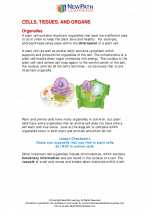
 Worksheet/Answer key
Worksheet/Answer key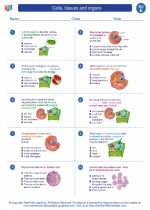
 Worksheet/Answer key
Worksheet/Answer key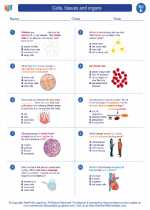
 Worksheet/Answer key
Worksheet/Answer key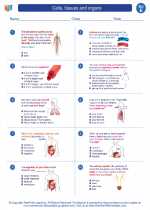
 Vocabulary/Answer key
Vocabulary/Answer key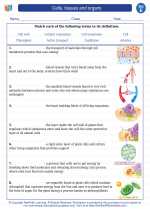
 Vocabulary/Answer key
Vocabulary/Answer key
 Vocabulary/Answer key
Vocabulary/Answer key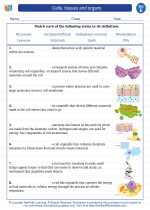
 Vocabulary/Answer key
Vocabulary/Answer key
 Vocabulary/Answer key
Vocabulary/Answer key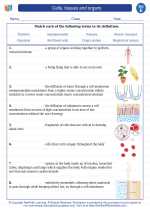
 Vocabulary/Answer key
Vocabulary/Answer key
